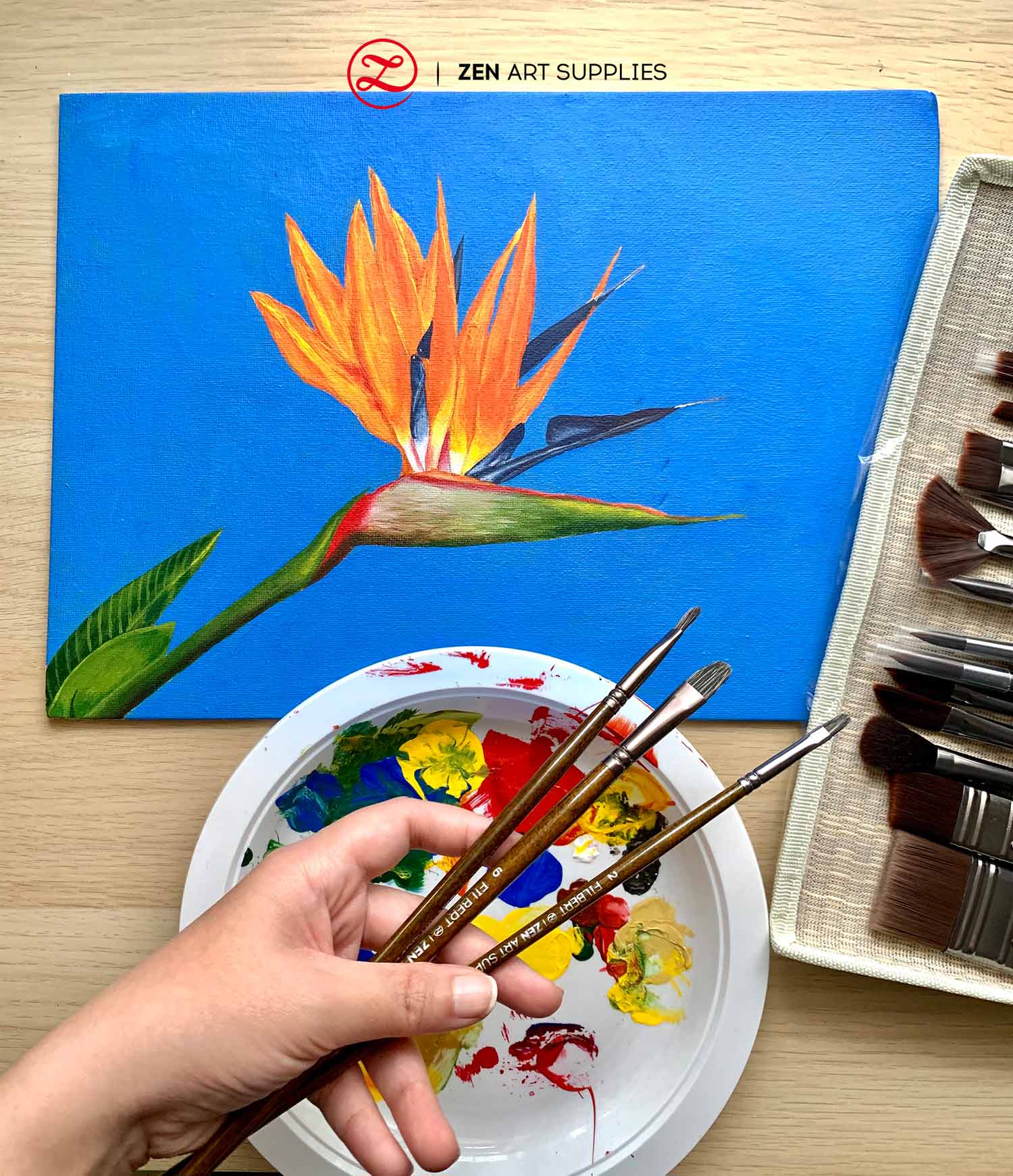Painting with acrylic paint is fun and easy. Acrylic paint is versatile and dries quickly. You can use it on many surfaces. This guide will show you how to start painting with acrylics.

Credit: www.zenartsupplies.co
Materials You Need
Before you start, gather your materials. Here is a list of what you need:
- Acrylic paints
- Paintbrushes
- Canvas or painting surface
- Palette
- Water and a container
- Paper towels or a cloth
These materials are easy to find. You can get them at any art store.
Preparing Your Workspace
Choose a well-lit area to paint. Make sure you have enough space. Cover your table with newspaper or a plastic sheet. This will protect it from paint spills.
Set up your materials. Put your paints on the palette. Fill your container with water. Keep your paper towels or cloth nearby. You are now ready to start painting.
Basic Techniques
Let’s learn some basic techniques. These will help you create beautiful artwork.
Blending
Blending is mixing two colors. Dip your brush in one color. Paint it on your canvas. Quickly clean your brush and dip it in another color. Paint next to the first color. Use a clean brush to blend the two colors together. This creates a smooth transition.
Layering
Layering adds depth to your painting. Paint one layer and let it dry. Paint another layer on top. You can use different colors or shades. This technique gives your painting texture and dimension.
Dry Brushing
Dry brushing creates a textured look. Dip your brush in paint. Wipe off excess paint with a paper towel. Lightly brush your canvas. This technique is great for adding highlights or texture.
Choosing the Right Colors
Colors make your painting come alive. Choose colors that work well together. Use a color wheel to help you. Complementary colors are opposite each other on the wheel. They look great together. For example, blue and orange are complementary colors.
Experiment with different color combinations. See what works best for your painting.
Cleaning Your Brushes
Clean your brushes after each use. This keeps them in good condition. Rinse them in water. Use a paper towel to wipe off excess paint. Store your brushes with the bristles up. This will help them last longer.

Credit: m.youtube.com
Common Mistakes to Avoid
Here are some common mistakes beginners make:
- Using too much water
- Not cleaning brushes properly
- Not letting layers dry
Avoid these mistakes to improve your painting skills.
Advanced Techniques
Once you master the basics, try advanced techniques:
Impasto
Impasto is a thick paint application. Use a palette knife instead of a brush. This creates a textured, 3D effect.
Glazing
Glazing adds a transparent layer of color. Mix paint with a glazing medium. Apply it over a dry layer. This technique creates depth and richness.
Painting Surfaces
Acrylic paint works on many surfaces. Here are some options:
- Canvas
- Wood
- Paper
- Glass
Each surface has its own texture. Experiment to see which one you like best.
Finishing Touches
Add finishing touches to your painting. Use a small brush for details. Add highlights and shadows. This makes your painting look more realistic.
Sealing Your Painting
Seal your painting to protect it. Use a varnish made for acrylic paint. Apply it with a clean brush. Let it dry completely. This will keep your painting looking new.
Displaying Your Artwork
Show off your artwork. Frame it or hang it as is. Display it in a place where it can be admired. Your hard work deserves to be seen.
Frequently Asked Questions
How To Start Painting With Acrylics?
Begin by gathering basic supplies: acrylic paint, brushes, and a canvas. Set up a clean workspace.
What Surfaces Can I Paint On?
Acrylics work on canvas, wood, paper, and more. Ensure the surface is clean and primed if needed.
How To Mix Acrylic Paint Colors?
Use a palette to mix colors. Start with small amounts and blend until you achieve the desired hue.
How Long Does Acrylic Paint Take To Dry?
Acrylic paint dries quickly, usually within 10-20 minutes. Thicker layers may take longer.
Conclusion
Painting with acrylic paint is enjoyable and rewarding. Follow these steps to create beautiful artwork. Practice and experiment with different techniques. Soon, you will become a skilled painter.
If you are looking to paint other surfaces, check out the best paint for brick fireplace or the best paint for shutters and doors. These guides will help you choose the right paint for different projects.